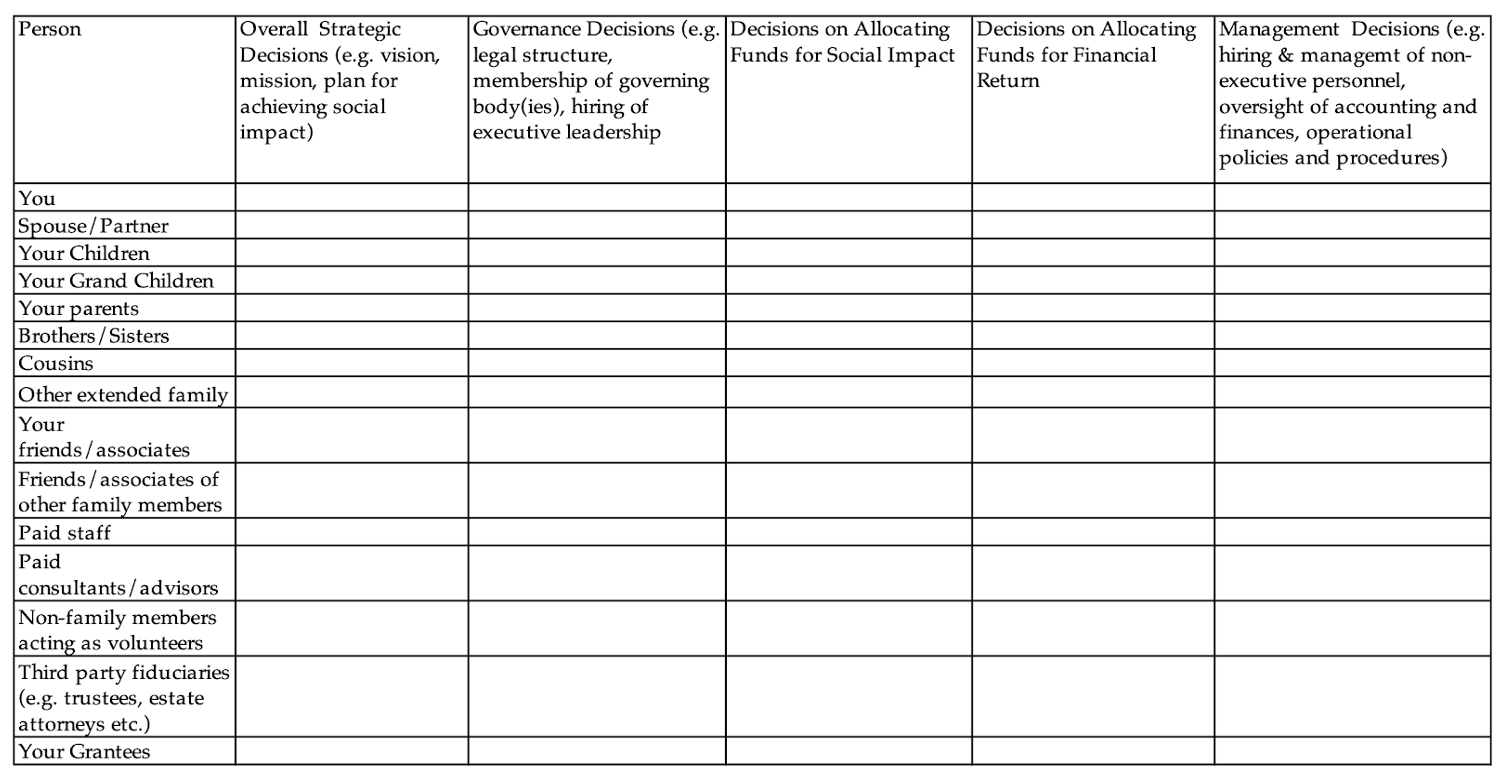Who Is Involved In Your Giving: Mapping Your Decision Making Process
May 11, 2022Mapping Your Philanthropic Decision-Making Process
One really useful way to get a handle on all the issues related to who is involved in your giving is to map out your decision-making process. Whatever role others play in your giving right now, chances are this will evolve over time. The chart below shows a key set of decision-making areas across the top row and a range of people who might be involved in these decisions. The chart is filled in using the following codes for the role that a given person plays in a particular decision-making arena. Download your own copy here

Propose: The person is responsible for bringing forward a proposed course of action.
Decide: This person makes decisions.
- D=formal authority as ultimate decision-maker
- d=one vote among a larger group, majority rules
- D=informal authority as ultimate decision-maker whatever the rules formally say
Consult: This person is asked for input about a decision before it is made.
Inform: This person is told about a decision once it is made.
Execute: This person is responsible for carrying out the decision once it is made.
The idea with this chart is to fill it in twice. First, map out who is involved in your giving right now and at what level of authority. Next, map out your current, best thinking on your ideal decision-making structure in the future. Who is involved in your giving, and who is doing what after you get geared up?
If these two charts are significantly different, it’s possible you may have some mixed feelings about moving forward. For example, if you are starting out as a “checkbook” philanthropist, the first chart you fill in will be pretty simple. You will have a whole lot of decision-making authority and there won’t be too many other names on the board. This is one reason why making the transition from doing things on your own can feel so challenging. You know that your own time is limited. By adding others into the process, even if it’s just your spouse, let alone staff and advisors, you are introducing more decision-making friction points. You are also exponentially increasing the need for communication. “Who” really matters! A lot of people with significant philanthropic capacity get stuck on the tradeoff between the streamlined decision-making of a DIY approach and the enhanced capacity and potential impact of a staffed approach. If this sounds like you, chances are you’ll want to dig more deeply into this. Check out this post for more on different options for staffing up and stay tuned for upcoming posts on working more effectively with others across all the dimensions of your giving.
Stay connected with news and articles
Join us to receive the latest news and updates from our team.
Don't worry, your information will not be shared, and you can unsubscribe at any time
We hate SPAM. We will never sell your information, for any reason.

